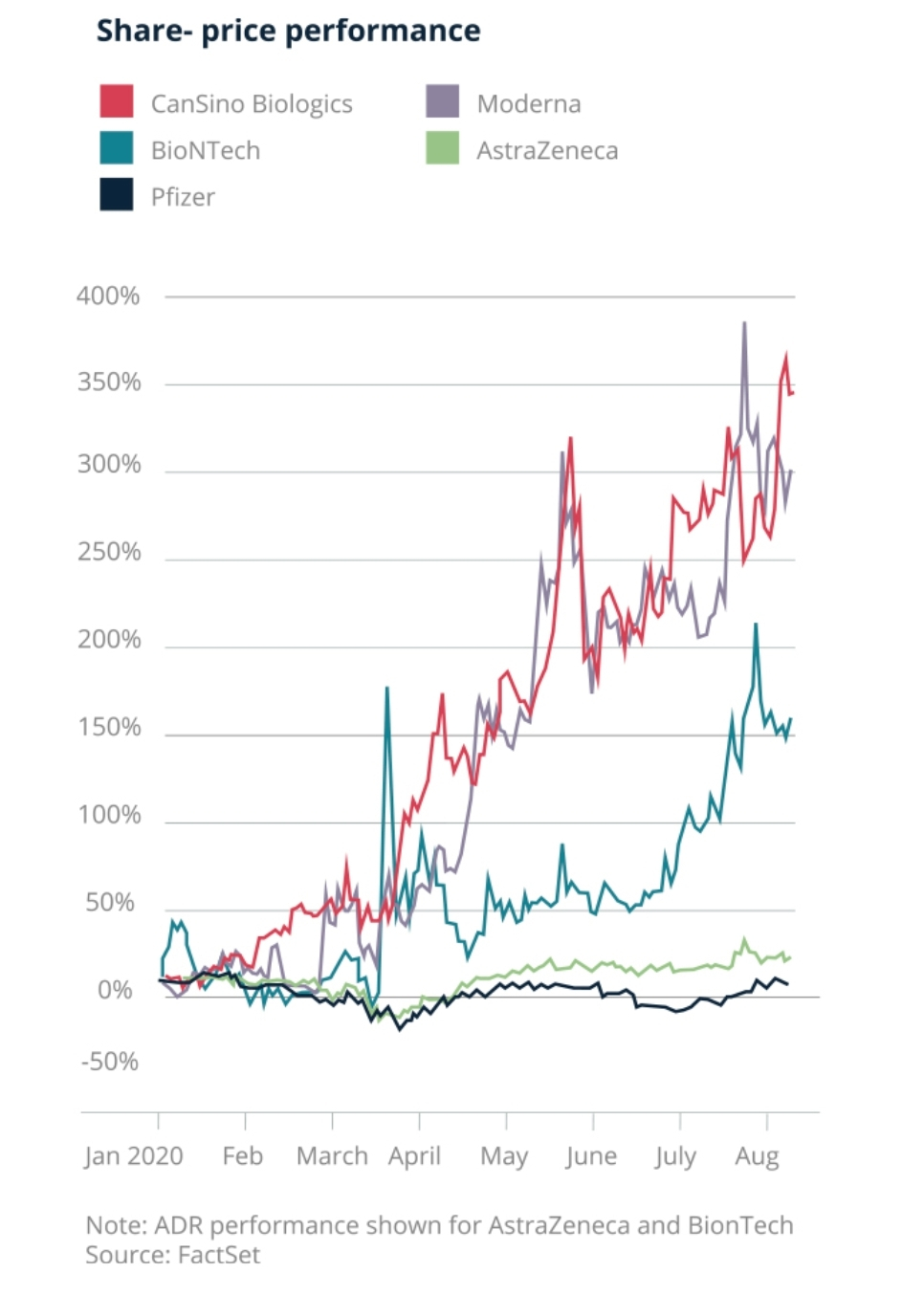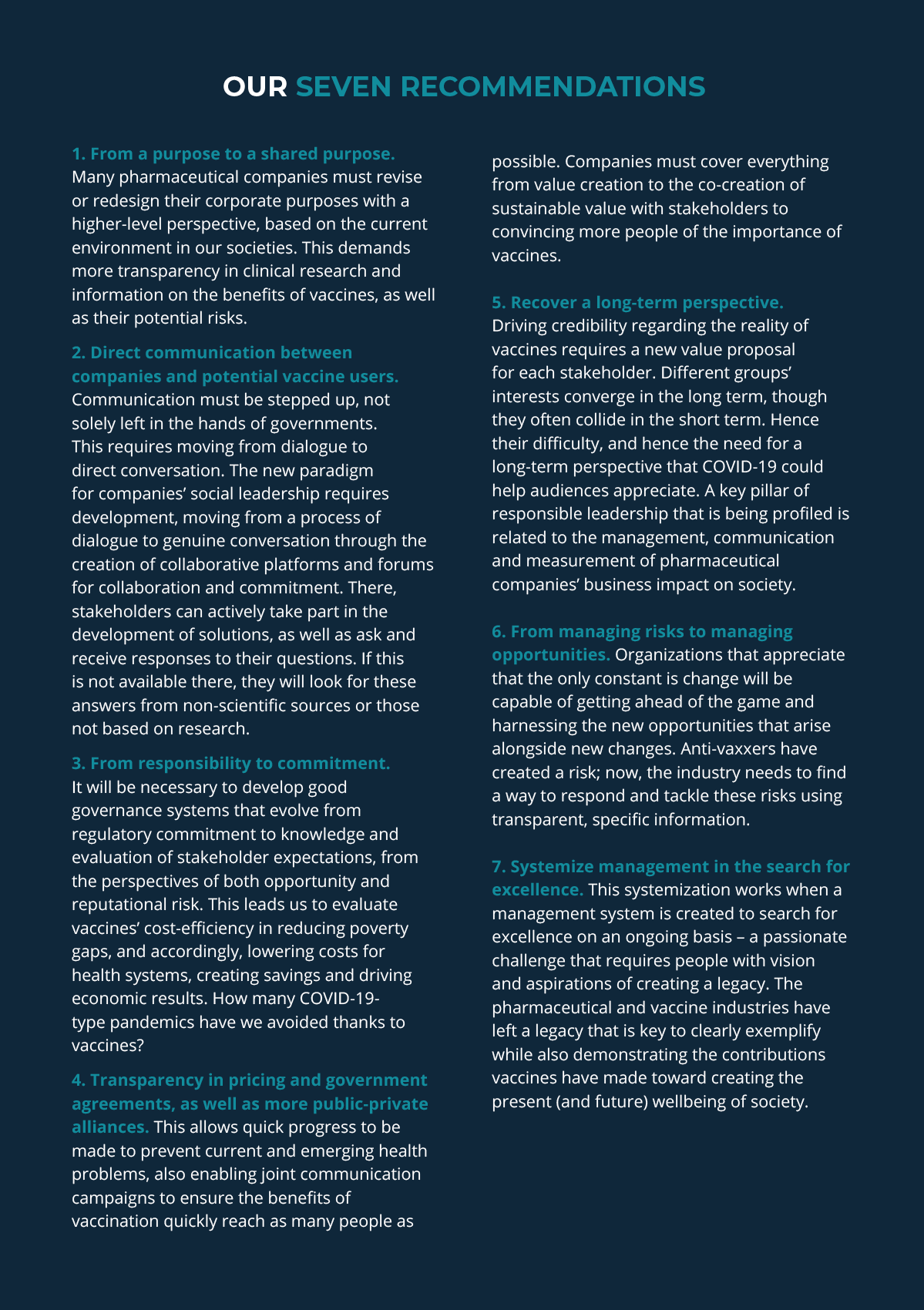Vaccines And Anti-Vaxxers, The Challenge Of Transparent Communication
Science vs. Skepticism, Fear and Financial Speculation
In the history of public health, drinking water and vaccines are recognized as two great contributions toward for disease prevention for humanity. Without a doubt, vaccination considerably reduces morbidity, disability, mortality and inequality around the world, reducing poverty and closing gaps in social inequality.
However, some skeptics, with no scientific basis, have become part of an anti-vaccine movement. Popular Spanish singer Miguel Bose drew attention to when he published a string of five anti-vaccine tweets that sought to halt COVID-19, the installation of 5G mobile phone antenna, Bill Gates and the Spanish government’s cooperation with Gavi, the Vaccine Alliance (Gavi). According to Bose, he came out to the world as an anti-vaccine activist (an “anti-vaxxer”) through this viral tweet, saying all these concepts have something in common – they form part of a supremacist plan “to obtain all sorts of information about the world’s population in order to control people.”
The World Health Organization (WHO) has classified anti-vaccine movements as a threat to the progress attained to date in fighting preventable diseases.
Despite the scientific evidence that proves the efficacy and need for vaccines, the anti-vaccine movement has attracted great attention by promoting unfounded theories that some people find credible. For these followers and others, fear of mortal diseases has been replaced by fear of vaccines’ secondary effects and the mistrust inspired by vaccination conspiracy theories. In fact, in a recent communication, the WHO and United Nations Children’s Fund (UNICEF) warned of an alarming decline in vaccine use and the corresponding negative impact on public health.
Paradoxically, the need for a vaccine to tackle the COVID-19 pandemic places the value of vaccines at centerstage once more. Institutions, governments and companies are committed to developing a vaccine to not only to contain the disease, but also to alleviate the global economic problem caused by the pandemic.
Financial speculation regarding progress on research into vaccines to combat COVID-19 has also surprised many people, leading pharmaceutical companies to impressive capitalization levels. According to figures from financial experts, five companies with vaccine candidates have increased their market capitalization by US$50 billion.

Given this, a series of questions has arisen
-
Is a new communications approach required to strengthen the social and economic benefit of vaccines?
-
Is the anti-vaccine movement, which seeks to erode public institutions, achieving its goal?
-
How can someone with full access to information come to believe that vaccines form part of the plan of an elite group seeking to control the world?
-
What can companies and organizations do to incentivize vaccination?
-
What communication and public opinion challenges are facing health authorities
Between the Social Benefit and the Economic Impact
According to the WHO, Gavi and the International Federation of Pharmaceutical Manufacturers and Associations (IFPMA), vaccines are the most cost-effective way to save lives and promote good health and wellbeing to prevent disease, death and incapacitation.
From the almost complete eradication of diseases such as polio to the successful distribution and mass application of the pentavalent vaccine that protects children from five diseases, vaccination has led to a generation of children with much greater chances of survival than previous generations had. At present, vaccination prevents 2-3 million deaths per year, and since 1990, it has managed to reduce the mortality rate in children under five by 52 percent.
According to Gavi, more than $150 trillion were generated in economic profit between 2000 and 2017. Furthermore, the WHO study that measured the economic impact of vaccination from 10 diseases in 73 countries between 2001 and 2020 concluded that immunizing the population would prevent more than 20 million deaths and save US$350 billion in costs to treat diseases.
In the case of the Americas, the Pan American Health Organization (PAHO) reports that six preventable diseases have been eradicated thanks to vaccination, which shows the efficacy of vaccines and their social contribution.
A large number of scientific and health organizations have confirmed the value of vaccines. The Center for Disease Control and Prevention (CDC) highlights vaccines as being essential as safe and proven protection from disease, stressing that serious secondary effects after vaccination are extremely rare.
COVID-19 Has Turned Vaccination Into A Challenge
Despite all the proven benefits of vaccination for public health, things are not going well for manufacturers or organizations, and far less for the beneficiaries of vaccination. According to a survey carried out by UNICEF, the WHO and Gavi, three-quarters of the 82 countries that responded confirm that vaccination programs have been interrupted due to the problems caused by COVID-19. This is because of several factors, including people’s inability to gain access to services, resistance to leaving home, the suspension of transport systems, economic difficulties and movement restrictions. The fear of the spread of SARS-CoV-2 is one of the main reasons behind the decline in visits to vaccination centers. However, immunization coverage dropped off by 85 percent for DTP and measles vaccines even before the emergence of COVID-19.
Preliminary data for the first four months of 2020 points to a significant decline in the number of children who complete the three doses of the vaccine against diphtheria, whooping cough and tetanus. This will be the first time in 28 years that the world has seen a decline in vaccines on this scale.
Anti-Vaccine Movement Influence
Saying no to the vaccine, no to the 5G antennas, no to Bill Gates and calling themselves the resistance of some representatives of this movement seems to have been taken from a dystopian film. Thousands of people around the world, including health and religious groups, politicians and even scientists, claim that vaccines and vaccinations are more harmful to humanity than the benefits they can provide. The anti-vaccine movement is primarily growing on the internet, with activists at times including highly influential figures such as Donald Trump, Jim Carrey and Luc Montagnier, winner of the Nobel Prize for Medicine Prize in 2008.
The reality is that we are at a key moment in time for this type of movement. With so much information and misinformation moving so quickly, it is easy to get confused.
At what point did the anti-vaccine movement become so influential, both in terms of communications and current affairs?
Since Edward Jenner coined the term “vaccination” in the 18th century and proposed inoculating people with one virus to protect them from another, there have always been those who have sought to discredit the vaccination process. Hence, the origin of anti-vaxxers can be traced back to the birth of vaccination. This is not a new group in the life of society, since our way of thinking, based on duality, leads to a simple truth – if thing A exists, then an anti-thing A probably also exists. When you add the success of fake news or the post-truth phenomenon to this, we have the perfect breeding ground to generate doubt.
Anti-System Anti-Vaccines
Since its origins and until just a few years ago, the anti-vaccine movement has been a constant force, whether for religious, political, family, philosophical or other reasons. The debate around vaccination has also been present beyond stories of success or failure. Being an anti-vaxxer has become a hallmark, specifically an anti-system identity.
When revising materials and theories on the main anti-vaccine campaigns, connective patterns emerge: Theories against 5G technology, a conspiracy of large pharmaceutical companies and the domination of renowned figures such as Bill Gates and George Soros, among others. The common denominator of all these narratives is that “the system” tries to control or manipulate people at large. Accordingly, a chain of beliefs is created which, when you accept one, leads you to believe in the others. For example, if someone begins to search for theories on 5G on Google, they will start to find arguments against vaccines and vice-versa. In other words, being anti-vaccine increasingly appears to be more anti-system.
However, the World is Waiting for A Vaccine: Progress
Now that we are facing an unprecedented pandemic, the world’s attention is on the search for a vaccine to control the spread of the virus and how we can provide equal access to it. In a matter of months, some pharmaceutical companies developed research plans to find solutions using new technologies, harnessing public-private alliances. Laboratories, researchers and universities have mobilized to discover potential vaccine candidates, some of which are now undergoing clinical trials.
Preliminary data on three potential vaccines were presented as positive at the end of July. Two studies, one by AstraZeneca and Oxford University and the other by the Chinese company CanSino, were published in the magazine The Lancet. Both show an immune response in most recipients of the experimental vaccine. In addition, the German company BioNTech and Pfizer reported that their vaccine candidate neutralized viral antibodies after two doses. U.S. company Moderna also reported on its preliminary results and has begun a final phase to test the vaccination’s effectiveness against COVID-19. This pharmaceutical company’s vaccine is the first outside of China to reach these levels; testing has now begun on 30,000 volunteers.
Many experts and pharmaceutical companies with long histories in the vaccination business have stated that it is too soon to draw conclusions from the data currently available, saying the phase the most advanced experimental vaccines are currently at is critical to showing security and efficacy in a large portion of the population. Some predict a vaccine may be available by mid-2021. Despite this, the price of AstraZeneca shares rose by 10 percent, but dropped to close at only 1.45 percent up from the opening price. Similar situations have occurred with other companies. Too much information is available about the preliminary results, and there is a great deal of speculation on the possibility of discovering a vaccine this year, as well as on its price and on who will have access to it.
Developing the vaccine is a challenge; convincing people to use it is another
A survey published by CNN in the United States indicated that one-third of North Americans surveyed would not use the vaccine against SARS-CoV-2, even if it were widely available. The results also showed that some people are skeptical of all types of vaccine, perhaps because the anti-vaccine movement has been successful. Others do not believe the vaccine will be safe because it is being developed in record time, while still more believe policy has contaminated the vaccine’s development and are thus reluctant to use it. All of this could be due to lack of confidence in light of all the information and misinformation in circulation.
A new communications approach is necessary, and the health authorities must recover their leading role.
Aside from the presentation of the preliminary clinical results and increase in the market value of companies that research and manufacture vaccines, society must once again be convinced of the usefulness of vaccines. Companies must take advantage of this historic moment to reconsider their communications, because while it was previously the responsibility of governments to organize vaccine workshops and convince people to attend vaccination modules, this now requires an approach based on confidence, forging transparency and highlighting the value of science.

Alejandro Romero
Partner and CEO Americas at LLYC
Javier Marín
Senior Director Healthcare Americas at LLYC
*** This article has been archived for your research. The original version from Google News can be found here ***



